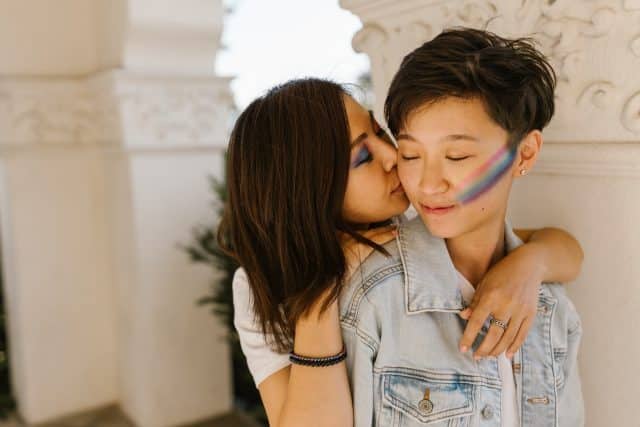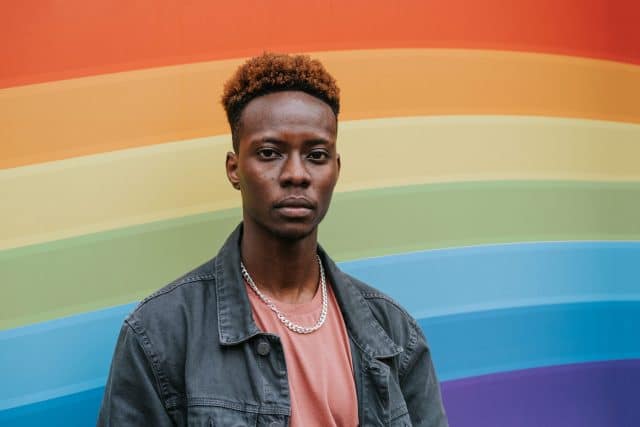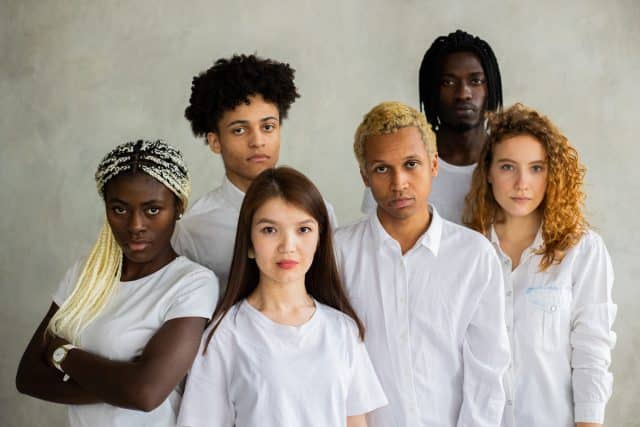SOGIE is an acronym that means sexual orientation, gender identity, and expression. These are three things that may be intimately intertwined with one another. They certainly are not the same thing—and, most importantly, everyone has one! Let’s take a closer look at each of these terms.
Related | How To Tell If Someone Is Gay: Is “Gaydar” Real?
What Is SOGIE? What Does SOGIE Stand For?
SOGIE stands for sexual orientation, gender identity, and expression. SOGIE is often used in conversations surrounding LGBTQ issues, but it’s not limited to this community – everyone has SOGIE!
Let’s break each of these terms down.
Sexual Orientation
Sexual orientation refers to one’s sexuality, orientation, and attraction (or lack thereof). Terms such as lesbian, gay, and bisexual fall under this umbrella. That’s because they talk about who a person is attracted to. Heterosexual or straight also falls under this umbrella. These terms simply mean being attracted to people of a different gender.
While “sexual” is in its name, sexual orientation, in its broadest sense, also covers romantic and emotional attraction. For example, an asexual person may not experience sexual attraction. They may still experience romantic attraction and still be interested in relationships with other people. Terms such as heteroromantic, homoromantic, and biromantic fall under this umbrella.
Gender Identity
The next SOGIE meaning we’ll look into is gender as identity. Identity is personal and determined solely by the person identifying themselves. The Human Rights Campaign (HRC) describes gender identity as “one’s innermost concept of self as male, female, a blend of both or neither – how individuals perceive themselves and what they call themselves”.
A very important distinction has to be made between gender and sex. One’s sex is biological and often assigned or given at birth based on external, observable anatomy – this can be male, female, or intersex. Meanwhile, one’s gender might not necessarily match one’s sex. For example, transgender people identify differently from their assigned sex at birth, while cisgender people identify with their assigned sex.

Gender Expression
Gender expression refers to how “a person publicly expresses or presents their gender”. It can include clothing, behavior, interests, and general appearance.
While gender expression is certainly closely tied with gender identity, it’s important to remember that it is also very personal – it is the person’s choice on how they express themselves. One’s gender expression doesn’t have to match society’s ideas of what certain gender identities look like.

He, She, They: All About Pronouns
One important way that people may choose to identify themselves is through pronouns. A person’s pronouns may or may not seem to “align” with their outward gender expression, especially if the person’s expression doesn’t necessarily align with feminine, masculine, or even androgynous social norms, but they are an important part of their gender expression and identity.
The most commonly used pronouns include “she/her” and “he/him”. These are traditional “female or male” pronouns, but not everyone who is comfortable using these pronouns necessarily identifies with a binary or traditional gender. For example, just because a person uses “she/her” pronouns does mean she automatically identifies as “female”.
Since gender pronouns are very closely tied to social feminine and masculine norms, some people use neutral pronouns, such as the singular “they/them”. While “they/them” is often used for groups of people, it is perfectly valid and grammatically correct (not that it matters) to use them for individual people. Others use neo pronouns such as “ze/hir” which are meant to replace traditional pronouns.
Using these pronouns may allow a person to feel more secure in their identity as it lets them break away from traditional gender stereotypes associated with traditional pronouns.

What Does Being Queer Mean?
Queer is a SOGIE term that can describe any non-cis heterosexual person’s sexual orientation or identity. For example, a queer person may be attracted only to people of the same gender and identify as cisgender or be attracted to all genders and identify as non-binary.
Sadly, queer has been used as a slur against LGBTQ people in the past, so some people in the community are not comfortable using the word to describe themselves. Still, many are choosing to reclaim the word and proudly label themselves as queer. It’s best to ask a person how they identify themselves before referring to them as queer.

The Importance Of SOGIE
SOGIE is an integral part of a person’s identity, whether one is queer, straight, or cisgender. However, it’s particularly important for people who don’t identify as straight or cisgender as it gives them the language to express their gender and sexuality in a more nuanced and authentic way.
Many countries now recognize SOGIE attributes as protected in their anti-discrimination laws, making sure that queer people are not discriminated against or forced to fit social norms. Sadly, there are still countries that do not – the Philippines, for one, still has its SOGIE bill languishing in legal limbo.

SOGIE Is For Everyone
While SOGIE seems to be nearly synonymous with LGBTQ issues, it’s important to remember that everyone has SOGIE. Understanding even the very basics of SOGIE can help everyone create a safer and more open environment for everyone, whether they’re lesbian, gay, bisexual, transgender, queer, or somewhere else on the LGBTQ spectrum.
Related | Openly Gay Indiana Mayor Makes 2020 Presidential Bid









